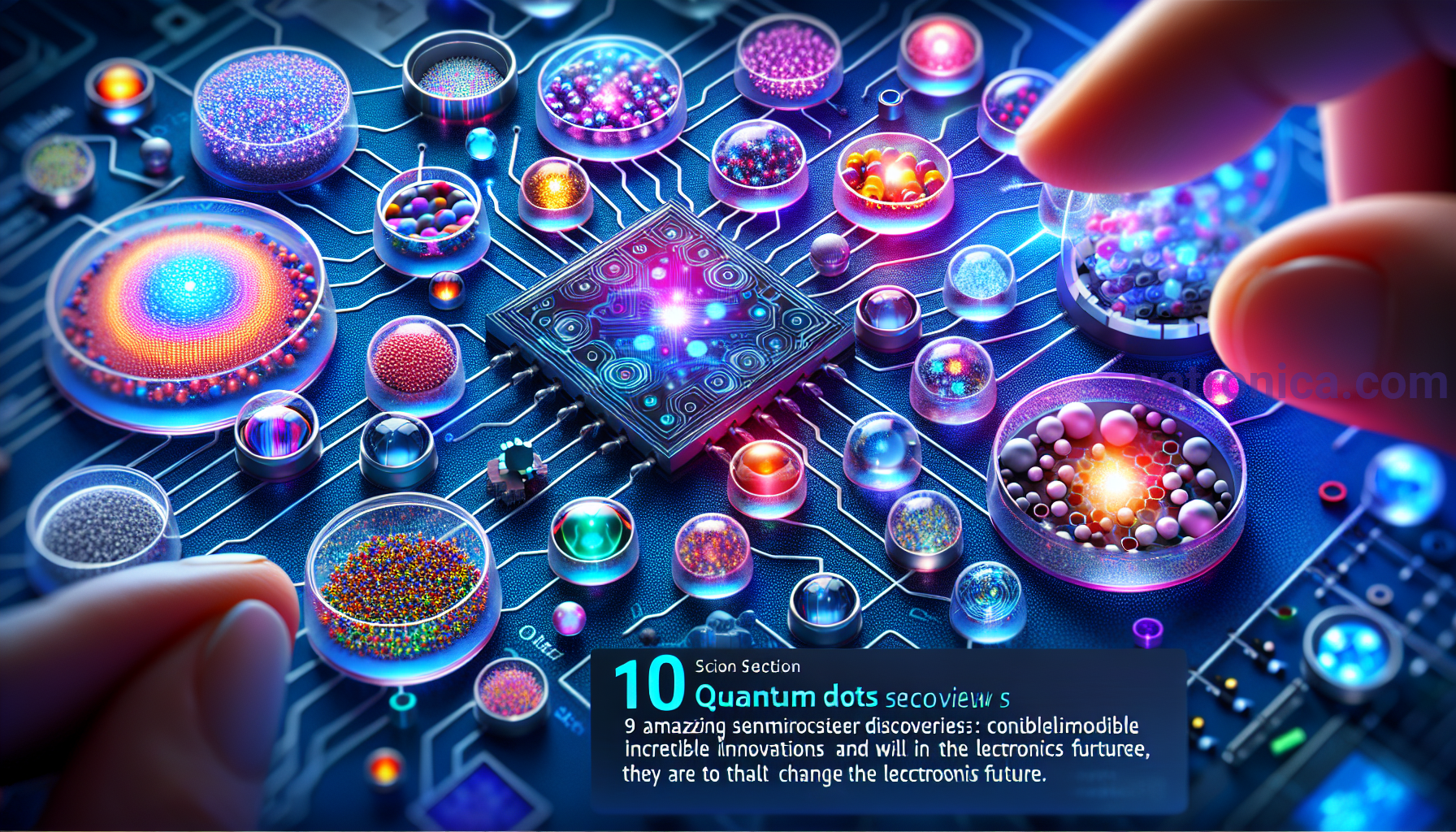10 New Scientific Discoveries in the World of Semiconductors: Incredible Innovations That Will Change the Future of Electronics
Nanoelectronics, semiconductor novelties, electronic innovations - these concepts have become critical for the modern world, where electronics are an indispensable part of our lives. The rapid development of technology and constant scientific research lead to many reviewed innovations that change the standards of electronics. In this review, we will present 10 innovations in the world of semiconductors that will revolutionize the future of electronics. Now let's take a closer look at these fascinating scientific discoveries.
1. Development of nanomaterials
In recent years, a lot of attention has been paid to development in the world of semiconductors nanomaterials, such as graphene, quantum dots and nanotubes. These materials have unique properties that provide improved electrical conductivity and resistance to excessive heat generation. For example, graphene is a 2D material made of a single layer of carbon atoms that has extraordinary electrical and thermal properties. The use of graphene in the production of electronic devices can significantly improve their functionality and performance.
Significant progress in the development of nanomaterials is expected in the coming year, which will open up new opportunities in the world of semiconductors. In the researcher's world, many leading scientists around the world have high hopes for the successful development of these materials. For more detailed information about nanotechnology, you can read article in Wikipedia.
2. Transistors with one molecule
Another incredible scientific discovery of the world of semiconductors is the creation transistors with one molecule. Such transistors have an unusually small size and high efficiency. They can be used to create extremely miniature electronic devices with high processing speed and minimal power consumption. Science has already found ways to create such transistors, and now our engineers are working on using this technology in real devices.
One example of such a transistor is B3FS-1002P-Omron, which has the ability to pass an electric charge through the molecule itself, which makes it possible to ensure high speed of operation and low energy consumption.
3. Quantum computing technology
Quantum computing technology is one of the most incredible innovations in the world of semiconductors that could change the future of electronics. Quantum computers use qubits instead of classical bits to perform calculations. Quantum qubits can simultaneously exist in a state of 0 and 1, which allows many calculations to be performed simultaneously, providing significantly higher processing speed and performance.
Although quantum computers are not yet widely used, research in this field continues. New quantum materials and calculation methods make it possible to expand the capabilities of this technology. For more detailed information about quantum computing technology, you can get acquainted with article in Wikipedia.
4. Use of excitons
Excitons are a combination of an electron and a hole in a semiconductor structure. This combination creates a new charge coupling and spin interaction between them. The use of excitons can lead to the creation of new electronic devices that work based on light dependence. For example, exciton lamps can be used as a light source with a higher light output compared to conventional sulfide lamps.

To date, a number of scientific groups are working to study excitons and their use in electronics. New methods and materials make it possible to create excitonic structures that open perspectives for new electronic devices. For more detailed information about excitons, you can read article in Wikipedia.
5. Heterostructures
Heterostructures are a combination of two or more different semiconductor materials. Such structures have different electronic properties and can be used to create special electronic devices. For example, heterostructure tunnel diodes can be used to create high-power microwave devices.
Heterostructures are widely used in the semiconductor world and continue to evolve thanks to new methods of synthesis and growth. These methods allow creating structures with higher quality and efficiency. Interest in heterostructures is growing, and this opens up opportunities for creating new types of electronic devices.
6. Memristors
Memristors are a new type of electronic device capable of storing information in an electrical structure. These devices are based on the change in resistance in materials under the influence of an electric current. Memristors can be used to create a new generation of memory that has low power consumption and large capacity.
To date, intensive research in the field of memristors continues. Scientists are looking for new materials and methods of their synthesis, which allow creating memristors with better characteristics. For more detailed information about memristors, you can read article in Wikipedia.
7. Silicon darts
Silicon darts are narrow structures of silicon with reduced dimensions compared to conventional materials. These darts can be used to create electronic devices with improved electrical conductivity and minimal energy loss. Such darts are used to create nanometer-sized transistors that have high processing speed and minimal energy consumption.
Silicon darts are one of those extremely small components being developed by labs and companies. New synthesis methods make it possible to create darts with extremely precise parameters. Also, silicon darts are one of the scientific directions described in another article on our website.
8. Ring semiconductor structures
Ring semiconductor structures are a new type of electronic devices that have the shape of a ring. These structures have unique properties, such as a large contact surface, which provides increased electrical conductivity and minimal energy consumption.
To date, numerous studies are being conducted in the field of ring structures. Scientists have discovered advanced methods of growing and manufacturing such structures, which allow obtaining devices with new properties. For more detailed information about ring semiconductor structures, you can read article in Wikipedia.

9. Quantum dots
Quantum dots are nanoparticles of semiconductor materials that have unique optical and electrical properties. These dots are extremely small and have a diameter of several nanometers. Depending on their size, quantum dots can produce light in different colors.
Quantum dots have found wide application in optical devices, in particular in LED displays and solar cells. Their use allows to improve the quality of light and the energy efficiency of devices. For more detailed information about quantum dots, you can read article in Wikipedia.
10. Electrons on low-dimensional structures
The latest scientific breakthrough in the world of semiconductors is the use of electrons on low-dimensional structures such as two-dimensional materials and nanotubes. These structures have unique properties that were unexpectedly revealed in experiments.
Electrons on low-dimensional structures have high mobility and effective thermal conductivity. Using such structures in real electronic devices could lead to faster and more efficient electronics. Some of these structures can be used to create quantum dots, single-molecule transistors, and other new electronic devices.
Conclusion
This review offers a detailed description of ten new scientific discoveries in the world of semiconductors that will change the future of electronics. From the development of nanomaterials and single-molecule transistors to quantum computing and heterostructures, these innovations point to incredible possibilities in the world of electronics. These discoveries have the potential to change not only the size and speed of electronic devices, but also their characteristics, functionality and performance.
Sources:
- Wikipedia: Nanotechnology
- Wikipedia: Quantum computing
- Wikipedia: Exciton
- Wikipedia: Memristor
- Wikipedia: Switch head configuration
- Wikipedia: Quantum dot
Thus, this review provides information on the latest scientific discoveries in the world of semiconductors. These discoveries have great potential to change the world of electronics and create new, more productive and efficient electronic devices in the future.










